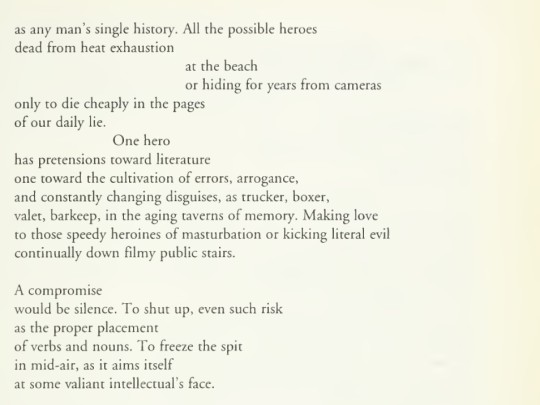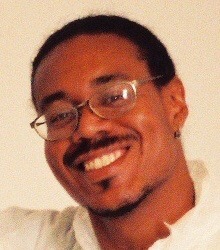#Black Arts Movement
Explore tagged Tumblr posts
Text






Nikki Giovanni
16 notes
·
View notes
Text
#nikki giovanni#poets#black poets#women poets#black women poets#black arts movement#rest in peace#rest in power#poetry
6 notes
·
View notes
Text

Tschabalala Self
Fragment Koco at the Bodega (2017)
7 notes
·
View notes
Text

Betye Saar, 1972
https://palianshow.wordpress.com/2022/07/30/betye-saar/
Betye Irene Saar (born July 30, 1926) is an #AfricanAmerican artist known for her work in the medium of assemblage. Saar is a visual storyteller and an accomplished printmaker. Saar was a part of the Black Arts Movement in the 1970s, which engaged myths and stereotypes about race and femininity. Via Wikipedia
#Artist #BetyeSaar #assemblage #artbywomen #blackwomenartists #BlackArtsMovement #artherstory #womensart #palianshow #contemporaryart #contemporary #art #femaleartist
4 notes
·
View notes
Text


This GIF is two of my idols.
Yolande Cornelia "Nikki" Giovanni Jr. (June 7, 1943 – December 9, 2024) was an American poet, writer, commentator, activist and educator.
***James Baldwin (born August 2, 1924—died December 1, 1987)***
#nikki giovanni#poems and poetry#black arts movement#black arts movement poets#poetry#black poets#black poetry matters#love poem#love poems#poems about love#love poetry
2 notes
·
View notes
Text
Nikki Giovanni - If you don’t understand yourself, you don’t understand ...
youtube
2 notes
·
View notes
Text
SONIA SANCHEZ // POET
“She is an American poet, writer, and professor. She was a leading figure in the Black Arts Movement and has written over a dozen books of poetry, as well as short stories, critical essays, plays, and children's books. In the 1960s, Sanchez released poems in periodicals targeted towards African-American audiences, and published her debut collection, Homecoming, in 1969. In 1993, she received Pew Fellowship in the Arts, and in 2001 was awarded the Robert Frost Medal for her contributions to the canon of American poetry. She has been influential to other African-American poets, including Krista Franklin.”


4 notes
·
View notes
Photo

(via Larry Neal Is the Forgotten Founding Father of the Black Arts Movement | Frieze)
3 notes
·
View notes
Text

Dindga McCannon (African-American b. 1947), Woman #1, 1975–1977. Acrylic on canvas, 106.68 × 83.82 cm | 42 × 33 in. (Source: National Gallery of Art, Washington)
#art#artwork#modern art#contemporary art#modern artwork#contemporary artwork#20th century modern art#20th century contemporary art#American art#modern American art#black arts movement#Where We At#American artist#American painter#Dindga McCannon
3 notes
·
View notes
Text




Amiri Baraka, "Short Speech to My Friends"
7 notes
·
View notes
Text
Literally just finished Oreo (Fran Ross) in like 7 hours, I’ve never read a book so fast in my life. I’m obsessed with it.
3 notes
·
View notes
Text

Michael Rolando Richards (August 2, 1963 – September 11, 2001) was an African-American sculptor of Jamaican and Costa Rican ancestry who was killed during the September 11 attacks while in his art studio on the 92nd Floor of the World Trade Center's North Tower. He explored his African-American history and identity through sculpture, conceptual art, and installation pieces. Influenced by the Black Arts Movement of the 1970s, Richards delved into African-American history and folklore for images that would expose the contradictions of American society. Richards worked primarily in bronze.


Richards's 1999 sculpture Tar Baby vs. St. Sebastian featured a Tuskegee Airman portrayed as St. Sebastian and was a part of his "Tuskegee Airmen Collection" that he spent over ten years creating. St. Sebastian was an early Christian martyr and the patron saint of soldiers and athletes because of his physical endurance. St. Sebastian was executed by being shot full of arrows for protecting captured Christians he was supposed to imprison. However, in this sculpture, it was a Tuskegee Airman who was being pierced by multiple airplanes. Tar Baby vs. St. Sebastian measures seven feet tall and is made out of resin and steel. Richards actually cast his own body in plastic resin to create this sculpture and others.
#Michael Rolando Richards#michael richards#black art#black arts movement#Tuskegee Airmen#Prescient#September 11#9/11
5 notes
·
View notes
Text
She was so full of love. I'm not claiming to be any kind of an expert on her work, but I know this much: Any critic who didn't see how full of love she was didn't get her.
0 notes
Text
🌟 Celebrating Nikki Giovanni! 🌟
Celebrating the powerful words of Nikki Giovanni, one of the key figures of the Black Arts Movement. In this poem "Woman," Giovanni explores themes of identity, self-empowerment, independence, and unfulfilled relationships. The poem captures a woman seeking to define herself on her own terms and yearning for mutual understanding and support in her relationship. However, when the man in her life fails to reciprocate, she ultimately embraces her individuality and self-reliance. Her evocative language and poignant insights make this poem a must-read for poetry lovers and fans of her work.
#nikki giovanni#woman#poem#black arts movement#poetry reading#spoken word#black american literature#feminist poetry#social justice#identity#empowerment
0 notes
